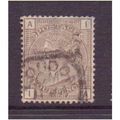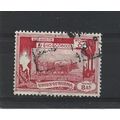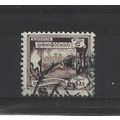Oban, Argyll & Bute - Railway Pier by Night - Dixon postcard c.1970s
- Condition : Used
- Dispatch : 2 Days
- Brand : None
- ID# : 140691149
- Quantity : 1 item
- Views : 145
- Location : United Kingdom

- Seller : justthebook (+1703)
- Barcode : None
- Start : Tue 30 Jun 2015 21:25:54 (BST)
- Close : Run Until Sold
- Remain : Run Until Sold
More Listings from This Seller view all
Seller's Description
- Postcard
- Picture / Image: The Railway Pier by Night, Oban, Argyll & Bute
- Publisher: J Arthur Dixon (PAR/24998)
- Postally used: no
- Stamp: n/a
- Postmark(s): n/a
- Sent to: n/a
- Notes / condition:
Please ask if you need any other information and I will do the best I can to answer.
Image may be low res for illustrative purposes - if you need a higher definition image then please contact me and I may be able to send one. No cards have been trimmed (unless stated).
------------------------------------------------
Postage & Packing:
Postage and packing charge should be showing for your location (contact if not sure).
No additional charges for more than one postcard. You can buy as many postcards from me as you like and you will just pay the fee above once. Please wait for combined invoice. (If buying postcards with other things such as books, please contact or wait for invoice before paying).
Payment Methods:
UK - PayPal, Cheque (from UK bank) or postal order
Outside UK: PayPal ONLY (unless otherwise stated) please. NO non-UK currency checks or money orders (sorry).
NOTE: All postcards are sent in brand new stiffened envelopes which I have bought for the task. These are specially made to protect postcards and you may be able to re-use them. In addition there are other costs to sending so the above charge is not just for the stamp!
I will give a full refund if you are not fully satisfied with the postcard.
----------------------------------------------
Text from the free encyclopedia WIKIPEDIA may appear below to give a little background information (internal links may not work) :
*************
Oban ( listen (help·info); An t-Òban in Scottish Gaelic meaning The Little Bay) is a resort town within the Argyll and Bute council area of Scotland. Despite its small size, it is the largest town between Helensburgh and Fort William and during the tourist season the town can play host to up to 25,000 people. Oban occupies a beautiful setting in the Firth of Lorn. The bay is a near perfect horseshoe, protected by the island of Kerrera, and beyond Kerrera the Isle of Mull. To the north is the long low island of Lismore, and the mountains of Morvern and Ardgour.
The site where Oban now stands has been used by humans since at least mesolithic times, as evidenced by archaeological remains of cave dwellers found in the town.[2] Just outside the town stands Dunollie Castle, on a site that overlooks the main entrance to the bay and has been fortified since the Bronze age. Prior to the 19th century, the town itself supported very few households, sustaining only minor fishing, trading, shipbuilding and quarrying industries, and a few hardy tourists.[3] The Renfrew trading company established a storehouse there in about 1714 as a local outlet for its merchandise, but no Custom-house was deemed necessary until around 1760.
The modern town of Oban grew up around the distillery which was founded there in 1794, and the town was raised to a burgh of barony in 1811 by royal charter.[4] Sir Walter Scott visited the area in 1814, the year in which he published his poem The Lord of the Isles, and interest in the poem brought many new visitors to the town. The arrival of the railways in the 1880s brought further prosperity, revitalising local industry and giving new energy to tourism. Shortly thereafter McCaig's Tower, a folly and prominent local landmark, was constructed, as well as the ill-fated Oban Hydro.
During World War II, Oban was used by Merchant and Royal Navy ships and was an important base in the Battle of the Atlantic. The Royal Navy had a signal station near Ganavan, and an anti-submarine indicator loop station which detected any surface or submarine vessels between Oban, Mull and Lismore. There was a controlled minefield in the Sound of Kerrera which was operated from a building near the caravan site at Gallanach. There was also a Royal Air Force flying boat base at Ganavan and on Kerrera, and an airfield at North Connel built by the Royal Air Force. A Sector Operations Room was built near the airfield, and after the war this was extended to become the Royal Observer Corps Group HQ.
Oban was also important during the Cold War because the first Transatlantic Telephone Cable (TAT-1) came ashore at Gallanach Bay. This carried the Hot Line between the US and USSR presidents.
Since the 1950s the principal industry has remained tourism, though the town is also an important ferry port, acting as the hub for ferries to many of the Hebrides.
The local culture is Gaelic. In 2011, 8.2% of the town's population over age 3 could speak Gaelic and 11.3% had some facility in the language.[5] Oban is considered the home of the Royal National Mod since it was first held there in 1892, with ten competitors on a Saturday afternoon. The town hosted the centenary Mod in 1992 (the year it became Royal) and in 2003 the 100th Mod, the two events attracting thousands of competitors and visitors (the 100th Mod was later than the centenary because it was not held in the war years). The Mod is held in Oban roughly every 6–8 years, and is next due in 2015.
An annual Highland Games, known as the Argyllshire Gathering,[6] is also held in the town.
The Corran Halls[7] theatre acts as a venue for community events, local and touring entertainers, and touring companies such as Scottish Opera.
The town had a two-screen cinema which was closed in early 2010. Thanks to a local community initiative, and supported by a number of famous names,[8] it was reopened in August 2012 as the Phoenix Cinema.[9] Oban has itself been used as a backdrop to several films including Ring of Bright Water and Morvern Callar.
The Oban War and Peace Museum advances the education of present and future generations by collecting, maintaining, conserving and exhibiting items of historical and cultural interest relating to the Oban area in peacetime and during the war years. A museum also operates within Oban Distillery, just behind the main seafront. The distillation of whisky in Oban predates the town: whisky has been produced on the site since 1794.[10] The Hope MacDougall collection [11] is a unique record of the working and domestic lives of people in Scotland.
Music is central to Gaelic culture, and there is lively interest in the town. In the 2010 Pipe Band season, the local Oban High School Pipe Band, led by piping legend Angus MacColl, were successful in winning the World Pipe Band Championships in Glasgow, the Cowal Games competition, and the Champion of Champions for the year in the novice-juvenile grade. The town also boasts a successful senior pipe band.[12] The local Gaelic choir competes regularly and successfully in the Mod.
During the 2011 Guy Fawkes Night, Oban became briefly infamous for its fireworks display, which became a worldwide news and online hit when £6,000 of display fireworks were ignited all at once due to a computer error. The display, which was due to last 20–30 minutes, was over in less than a minute. Pyro1, the company putting on the display, later said sorry to the town by providing a free fireworks show.[13][14]
The town has been the birthplace and home of a number of well known people.
type=printed
city/ region=oban
period=post-war (1945-present)
postage condition=unposted
number of items=single
size=continental/ modern (150x100 mm)
Listing Information
| Listing Type | Gallery Listing |
| Listing ID# | 140691149 |
| Start Time | Tue 30 Jun 2015 21:25:54 (BST) |
| Close Time | Run Until Sold |
| Starting Bid | Fixed Price (no bidding) |
| Item Condition | Used |
| Bids | 0 |
| Views | 145 |
| Dispatch Time | 2 Days |
| Quantity | 1 |
| Location | United Kingdom |
| Auto Extend | No |



 for 1 item(s)
for 1 item(s)

















